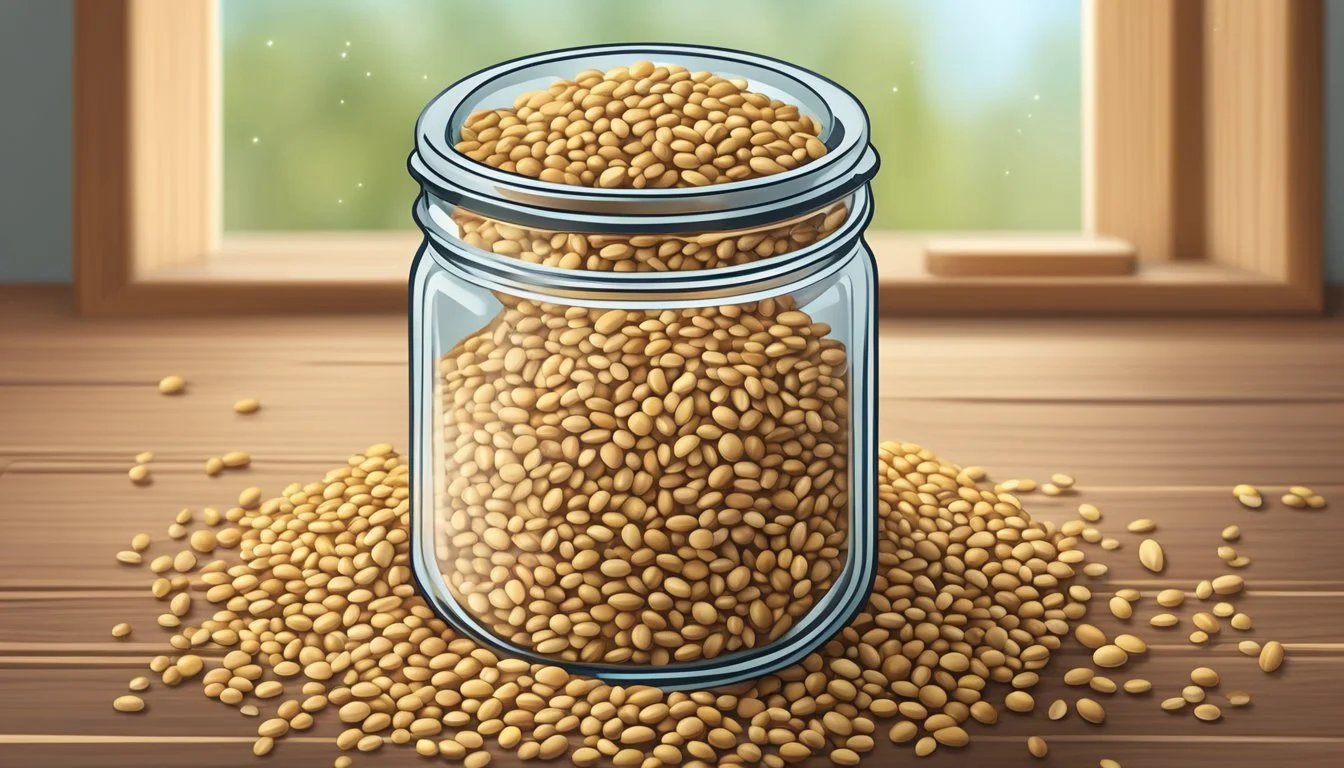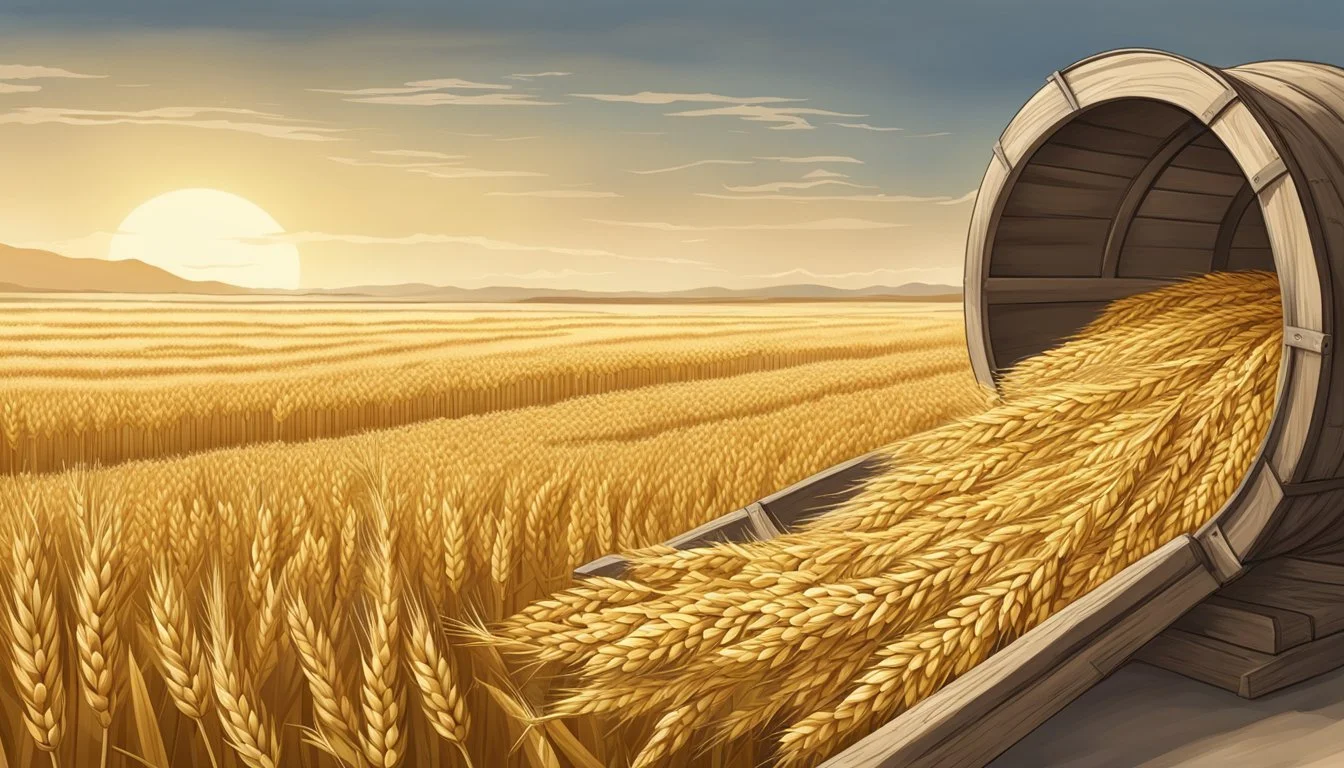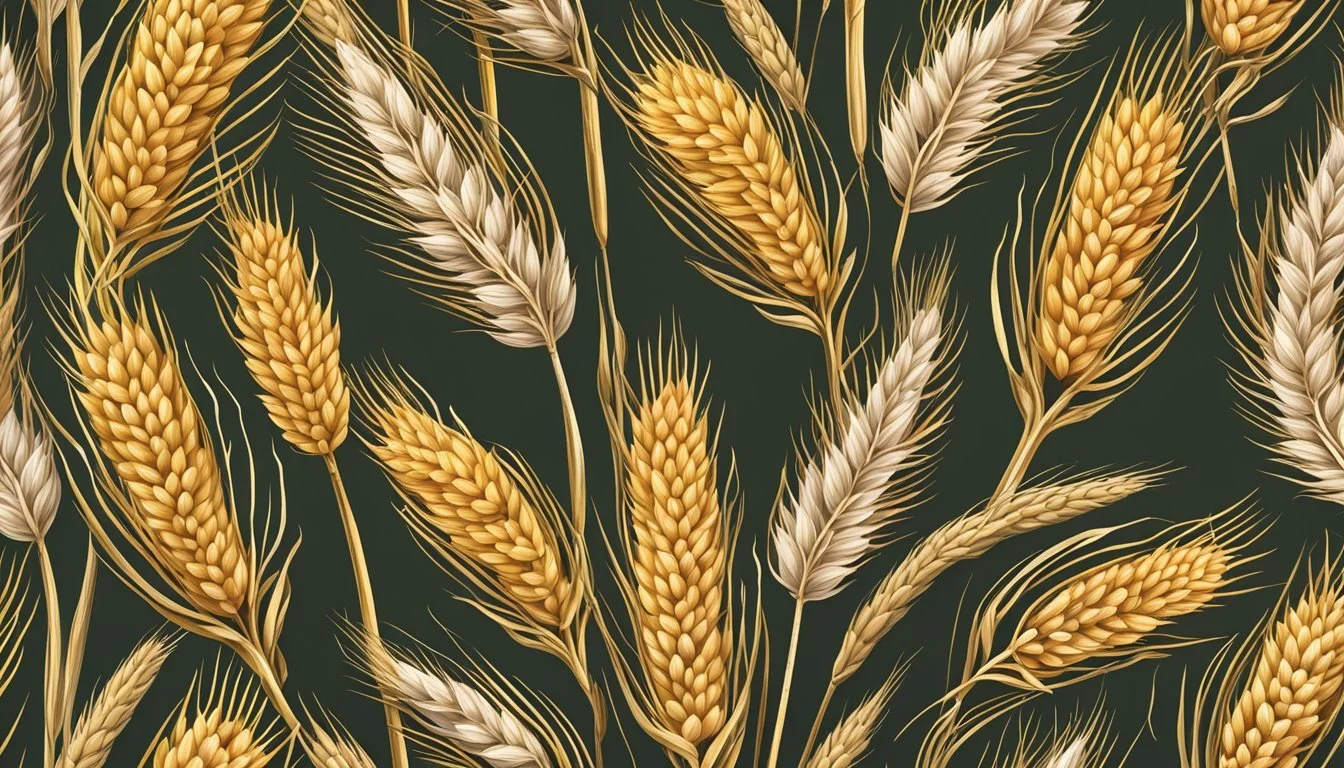Does Durum Wheat Go Bad?
Understanding Shelf Life and Storage Tips
Durum wheat, a staple in many kitchens, is renowned for its high protein content and firm texture, making it ideal for pasta and bread. While durum wheat can last for several months if stored properly, it does eventually go bad. To maximize its shelf life, it should be kept in a cool, dry place, away from moisture and pests.
The longevity of durum wheat depends heavily on storage conditions. For instance, unopened packages kept at room temperature typically last between 6 to 8 months. When refrigerated, their shelf life extends to about a year. For even longer storage, freezing can keep durum wheat usable for up to two years.
Recognizing the signs of spoilage is crucial to ensure food safety. If the grains develop an off smell, color changes, or any signs of infestation, they should be discarded immediately. Proper storage not only preserves the quality of durum wheat but also ensures it remains a healthy, nutritious component of meals.
Overview of Durum Wheat
Durum wheat is a species of hard wheat primarily grown in the Mediterranean region. This wheat variety is known for producing semolina and semolina flour, both essential for making pasta and couscous.
Grains of durum wheat have a high protein content, which contributes to their firm texture. This quality makes them ideal for various culinary uses.
Durum wheat is composed of three primary parts:
Bran
Endosperm
Germ
The endosperm is particularly important as it is ground into semolina, offering a granular texture.
In terms of nutrients, durum wheat is rich in essential vitamins such as B vitamins. It also provides important minerals like iron, magnesium, and zinc. This nutrient profile supports diverse dietary needs.
Dietary fiber content in durum wheat is beneficial for digestive health. Whole grain varieties maintain this fiber, which promotes regularity and supports cardiovascular health.
Additionally, due to its nutrition profile, durum wheat is a valuable source of energy, providing sustained energy release. This aspect is particularly beneficial in whole grain form.
Durum wheat semolina is versatile. It is not only used for pasta but also in creating desserts, puddings, and breakfast porridges. This flexibility makes it a staple in many kitchens.
The clear nutritional advantages and diverse functions underscore the significance of whole grain durum wheat in balanced diets.
Health Benefits of Durum Wheat
Durum wheat offers numerous health benefits, making it a valuable part of a balanced diet.
It is high in protein, containing about 13.6 grams per 100 grams. Protein supports muscle growth and repair.
Dietary fiber in durum wheat aids digestion and helps in managing blood glucose levels. Specifically, insoluble fiber prevents constipation and promotes gut health.
Durum wheat is also rich in B vitamins such as folate (folic acid), riboflavin, and niacin. These vitamins are essential for energy production and maintaining a healthy metabolism. Folate is particularly important during pregnancy.
Iron and magnesium found in durum wheat contribute to its nutritional value. Iron supports the production of hemoglobin, preventing anemia. Magnesium is crucial for muscle and nerve function.
It contains zinc and phosphorus. Zinc is necessary for immune function and wound healing, while phosphorus is vital for bone health.
Whole grain durum wheat has a low glycemic index. This makes it beneficial for blood sugar management and energy levels, making it suitable for individuals monitoring their blood sugar.
As a source of gluten, durum wheat is not suitable for those with celiac disease or gluten sensitivities.
Including durum wheat in the diet can also aid in weight loss due to its high fiber content, which promotes a feeling of fullness and reduces overall calorie intake.
Its balanced nutrient profile supports overall health and well-being when incorporated into a varied diet.
Durum Wheat in the Kitchen
Durum wheat is a versatile grain commonly used in the kitchen for various culinary applications. Its distinctive golden color and higher protein content make it a popular choice for making pasta and other baked goods.
Pasta and Noodles
Durum wheat flour, or semolina, is ideal for pasta-making. Its high protein and gluten content provide the necessary elasticity for shaping spaghetti, noodles, and other pasta varieties. This results in a firm texture that holds well when cooked.
Breads and Baked Goods
In baking, durum wheat is often combined with common wheat to create bread with a denser and chewier texture. It is also used in making specialty breads and pizza dough. The addition of durum wheat adds a unique flavor and texture to baked goods.
Culinary Uses
Durum wheat can be used to prepare various dishes beyond pasta and bread. It is the main ingredient in bulgur, which is often used in salads and stews. The coarse nature of durum wheat makes it suitable for creating whole-grain dishes that pair well with vegetables and fruits.
Nutritional Profile
Rich in carbohydrates, durum wheat provides sustained energy. It also contains protein, fiber, and essential vitamins and minerals. This makes it a nutritious option for those looking to add variety while maintaining a balanced diet.
Tips for Cooking
When cooking with durum wheat pasta, pair it with robust sauces that can complement its firm texture. It also works well in stews and soups, where its structure holds up without becoming mushy.
Durum wheat’s unique properties make it an essential ingredient in various culinary traditions, contributing to delicious and nutritious meals.
Understanding Gluten in Durum Wheat
Durum wheat is rich in gluten, a protein mixture composed mainly of gliadin and glutenin.
Gluten provides the elasticity and structure in dough, making it essential for bread and pasta production.
People with celiac disease must avoid gluten, as it triggers an immune reaction damaging the small intestine.
Even a small amount of gluten can be harmful to those with celiac disease.
Gluten sensitivity and other gluten sensitivities can cause digestive discomfort in individuals without celiac disease.
Some symptoms include bloating, gas, and diarrhea.
Durum wheat has high gluten content, increasing its elasticity and making it unsuitable for a gluten-free diet.
Type 2 diabetes patients often follow a gluten-free diet to improve digestion and insulin sensitivity.
Pasta alternatives for those avoiding gluten include options made from brown rice, quinoa, or legumes.
Proper Storage of Durum Wheat
Durum wheat should be stored under optimal conditions to maintain its quality. It is best kept in an airtight container to prevent moisture and pests from compromising the grain.
Storage Conditions:
Cool, Dry Place: Store durum wheat in a cool, dry place. The ideal temperature range is between 5-45°C (41-113°F).
Airtight Containers: Use airtight containers to protect against moisture and pests.
Avoid Humidity: Always keep the storage area free from excess humidity to prevent spoilage.
Pantry: Durum wheat can last for up to 6 months when stored in a pantry.
Refrigerator: The shelf life extends to around a year when kept in the refrigerator.
Freezer: For the longest shelf life, store it in the freezer, where it can last up to 2 years.
Packaging:
Unopened Packaging: If the packaging is unopened and remains sealed, durum wheat can last beyond the expiration date. Always check the expiration date on the packaging.
Resealing: After opening the package, resealing is essential to maintain freshness.
Proper storage is crucial to preventing spoilage and maintaining the quality of durum wheat. Keeping the grain away from moisture, pests, and high temperatures ensures its longevity.
Identifying Spoilage in Durum Wheat
Durum wheat, like any other food product, can spoil over time. Identifying spoilage early can prevent health risks and ensure quality.
Color and Appearance
Color is a significant indicator of freshness. High-quality durum wheat should be golden yellow. If the wheat appears dull, gray, or includes dark spots, it may be spoiled. Discoloration can result from oxidation, mold growth, or insect infestation.
Mold Growth
Mold is a visible sign of spoilage. Check the wheat for any signs of mold, which can appear as green, white, or black spots. Mold not only affects the appearance but also the safety of the product.
Odor
A fresh batch of durum wheat should smell clean and slightly nutty. An off smell, such as a musty or sour odor, may indicate spoilage. This can be due to microbial activity or improper storage conditions.
Shelf Life and Storage Conditions
Typically, durum wheat should be stored in a cool, dry place. Good storage conditions can extend the shelf life to around 6-8 months. If kept in the refrigerator, it can last up to a year. The freezer can prolong the shelf life even further, but always ensure the wheat is sealed properly to avoid moisture.
Insect Infestation
Presence of insects or insect residue is a clear indication that the durum wheat has gone bad. Always check the storage container and the wheat itself for signs of infestation.
Texture
Good-quality durum wheat should have a firm texture. If it feels excessively dry, brittle, or unusually soft, spoilage might have occurred.
Impact of Durum Wheat on Dietary Conditions
Durum wheat can influence various dietary conditions due to its nutrient composition.
Blood Sugar Levels and Diabetes
Durum wheat has a lower glycemic index compared to refined wheat. This helps in managing blood sugar levels, making it suitable for those with diabetes when consumed in proper portion sizes. Consuming al dente pasta made from durum wheat further lowers the glycemic impact.
Cholesterol and Heart Health
High in dietary fiber, durum wheat helps manage cholesterol levels. Fiber aids in reducing bad cholesterol (LDL), promoting heart health.
Bowel Movements
Insoluble fiber present in durum wheat supports bowel health. It helps prevent constipation and promotes regular bowel movements, making it beneficial for digestive health.
Weight Management
The fiber and protein in durum wheat contribute to satiety and reduce overall caloric intake, aiding in weight management. A balanced portion size is essential to prevent overeating.
Essential Nutrients
Durum wheat is rich in essential vitamins and minerals. It provides B vitamins which are crucial for various bodily functions, including energy production and maintaining healthy skin and nerves.
Pregnancy
High folate content in durum wheat is beneficial during pregnancy. Folate supports fetal development and is essential for preventing birth defects.
Durum wheat, due to its nutritional profile, plays a vital role in managing various dietary conditions effectively. Proper preparation and portion control enhance its benefits, making it a valuable addition to a balanced diet.
Comparison to Other Grains
Durum wheat (Triticum turgidum) is distinct from other grains in both its uses and nutritional profile. It is primarily used to make pasta due to its high protein and elasticity content. When ground into semolina flour, it is also found in couscous and some breads.
Whole wheat is another common grain, featuring all parts of the grain kernel: the bran, germ, and endosperm. This composition makes it rich in fiber, minerals, and antioxidants. Whole wheat is versatile, used in baking as whole wheat flour and all-purpose flour.
Nutritionally, whole grains like durum wheat and whole wheat offer significant benefits. Both contain complex carbohydrates and provide a sustained energy release compared to refined grains. However, durum wheat's high protein content gives it an edge in certain dietary applications, particularly in high-protein diets.
In comparison, grains like barley and farro are also nutritious. Barley has a chewy texture and is often used in soups and stews, while farro is known for being a hearty addition to salads and pilafs. Each grain has unique uses and textures that cater to various culinary needs.
Table of Grain Characteristics:
Grain Primary Uses Protein Content Nutritional Highlight Durum Wheat Pasta, couscous, semolina flour High High protein, elastic dough Whole Wheat Baking (bread, all-purpose flour) Moderate Rich in fiber, minerals Barley Soups, stews, pilafs Moderate Chewy texture, antioxidants Farro Salads, pilafs, soups Moderate High in fiber, ancient grain
When choosing between these grains, think about the dish being prepared and specific dietary needs. Durum wheat's robust protein and whole wheat's fiber-rich properties make them excellent choices for balanced meals.









